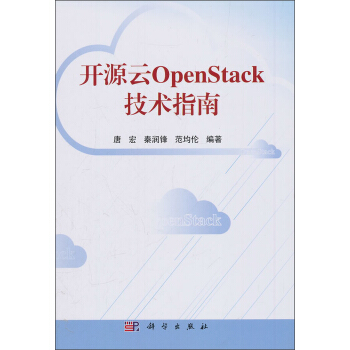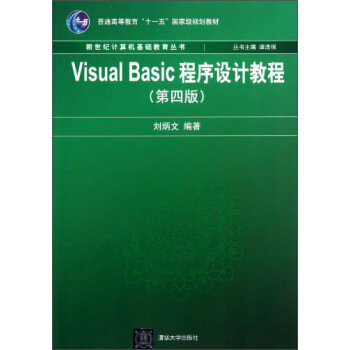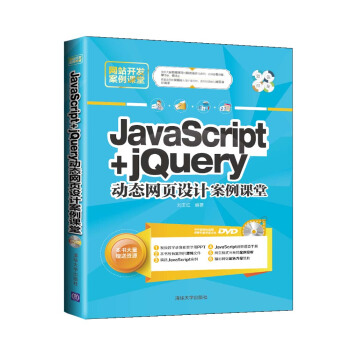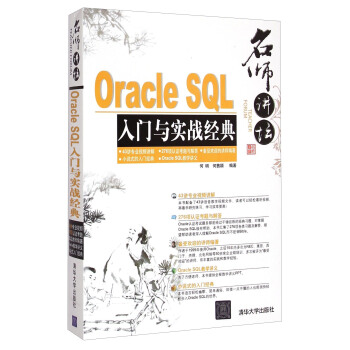

具体描述
编辑推荐
《人工智能:复杂问题求解的结构和策略(英文版)(第6版)》是一本经典的人工智能教材,全面阐述了人工智能的基础理论,有效结合了求解智能问题的数据结构以及实现的算法,把人工智能的应用程序应用于实际环境中,并从社会和哲学、心理学以及神经生理学角度对人工智能进行了独特的讨论。《人工智能:复杂问题求解的结构和策略(英文版)(第6版)》新增内容新增一章,介绍用于机器学习的随机方法,包括一阶贝叶斯网络、各种隐马尔可夫模型,马尔可夫随机域推理和循环信念传播。介绍针对期望大化学习以及利用马尔可夫链蒙特卡罗采
内容简介
《人工智能:复杂问题求解的结构和策略(英文版)(第6版)》英文影印版由PearsonEducationAsiaLtd授权机械工业出版社少数出版。未经出版者书面许可,不得以任何方式复制或抄袭《人工智能:复杂问题求解的结构和策略(英文版)(第6版)》内容。仅限于中华人民共和国境内(不包括中国香港、澳门特别行政区和中国台湾地区)销售发行。
《人工智能:复杂问题求解的结构和策略(英文版)(第6版)》封面贴有PearsonEducation(培生教育出版集团)激光防伪标签,无标签者不得销售。
作者简介
George F.Luger 1973年在宾夕法尼亚大学获得博士学位,并在之后的5年间在爱丁堡大学人工智能系进行博士后研究,现在是新墨西哥大学计算机科学研究、语言学及心理学教授。内页插图
精彩书评
“在该领域里学生经常遇到许罗很难的概念,通过深刻的实例与简单明了的祝圈,该书清晰而准确垲阚述了这些概念。”——Toseph Lewis,圣迭戈州立大学
“本书是人工智能课程的完美补充。它既给读者以历史的现点,又给幽所有莰术的宾用指南。这是一本必须要推荐的人工智能的田书。”
——-Pascal Rebreyend,瑞典达拉那大学
“该书的写作风格和全面的论述使它成为人工智能领域很有价值的文献。”
——Malachy Eat
目录
PrefacePublishers Acknowledgements
PART Ⅰ ARTIFIClAL INTELLIGENCE:ITS ROOTS AND SCOPE
1 A1:HISTORY AND APPLICATIONS
1.1 From Eden to ENIAC:Attitudes toward Intelligence,Knowledge,andHuman Artifice
1.2 0verview ofAl Application Areas
1.3 Artificial Intelligence A Summary
1.4 Epilogue and References
1.5 Exercises
PART Ⅱ ARTIFlClAL INTELLIGENCE AS REPRESENTATION AN D SEARCH
2 THE PREDICATE CALCULUS
2.0 Intr0血ction
2.1 The Propositional Calculus
2.2 The Predicate Calculus
2.3 Using Inference Rules to Produce Predicate Calculus Expressions
2.4 Application:A Logic-Based Financial Advisor
2.5 Epilogue and References
2.6 Exercises
3 STRUCTURES AND STRATEGIES FOR STATE SPACE SEARCH
3.0 Introducfion
3.1 GraphTheory
3.2 Strategies for State Space Search
3.3 using the state Space to Represent Reasoning with the Predicate Calculus
3.4 Epilogue and References
3.5 Exercises
4 HEURISTIC SEARCH
4.0 Introduction
4.l Hill Climbing and Dynamic Programmin9
4.2 The Best-First Search Algorithm
4.3 Admissibility,Monotonicity,and Informedness
4.4 Using Heuristics in Games
4.5 Complexity Issues
4.6 Epilogue and References
4.7 Exercises
5 STOCHASTIC METHODS
5.0 Introduction
5.1 The Elements ofCountin9
5.2 Elements ofProbabilityTheory
5.3 Applications ofthe Stochastic Methodology
5.4 BayesTheorem
5.5 Epilogue and References
5.6 Exercises
6 coNTROL AND IMPLEMENTATION OF STATE SPACE SEARCH
6.0 Introduction l93
6.1 Recursion.Based Search
6.2 Production Systems
6.3 The Blackboard Architecture for Problem Solvin9
6.4 Epilogue and References
6.5 Exercises
PARTⅢ CAPTURING INTELLIGENCE:THE AI CHALLENGE
7 KNOWLEDGE REPRESENTATION
7.0 Issues in Knowledge Representation
7.1 A BriefHistory ofAI Representational Systems
7.2 Conceptual Graphs:A Network Language
7.3 Alternative Representations and Ontologies
7.4 Agent Based and Distributed Problem Solving
7.5 Epilogue and References
7.6 Exercises
8 STRONG METHOD PROBLEM SOLVING
8.0 Introduction
8.1 Overview ofExpert Sygem Technology
8.2 Rule.Based Expert Sygems
8.3 Model-Based,Case Based and Hybrid Systems
8.4 Planning
8.5 Epilogue and References
8.6 Exercises
9 REASONING IN UNCERTAIN STUATIONS
9.0 Introduction
9.1 Logic-Based Abductive Inference
9.2 Abduction:Alternatives to Logic
9.3 The Stochastic Approach to Uncertainty
9.4 Epilogue and References
9.5 Exercises
PART Ⅳ
MACHINE LEARNING
10 MACHINE LEARNING:SYMBOL-BASED
10.0 Introduction
10.1 A Framework for Symbol based Learning
10.2 version Space Search
10.3 The ID3 Decision Tree Induction Algorithm
10.4 Inductive Bias and Learnability
10.5 Knowledge and Learning
10.6 Unsupervised Learning
10.7 Reinforcement Learning
10.8 Epilogue and Referenees
10.9 Exercises
11 MACHINE LEARNING:CONNECTIONtST
11.0 Introduction
11.1 Foundations for Connectionist Networks
11.2 Perceptron Learning
11.3 Backpropagation Learning
11.4 Competitive Learning
11.5 Hebbian Coincidence Learning
11.6 Attractor Networks or“Memories”
11.7 Epilogue and References
11.8 Exercises 506
12 MACHINE LEARNING:GENETIC AND EMERGENT
12.0 Genetic and Emergent MedeIs ofLearning
12.1 11Ic Genetic Algorithm
12.2 Classifier Systems and Genetic Programming
12.3 Artmcial Life and Society-Based Learning
12.4 EpilogueandReferences
12.5 Exercises
13 MACHINE LEARNING:PROBABILISTIC
13.0 Stochastic andDynamicModelsofLearning
13.1 Hidden Markov Models(HMMs)
13.2 DynamicBayesianNetworksandLearning
13.3 Stochastic Extensions to Reinforcement Learning
13.4 EpilogueandReferences
13.5 Exercises
PART Ⅴ
AD,ANCED TOPlCS FOR Al PROBLEM SOLVING
14 AUTOMATED REASONING
14.0 Introduction to Weak Methods inTheorem Proving
14.1 TIIeGeneralProblem SolverandDifiel"enceTables
14.2 Resolution TheOrem Proving
14.3 PROLOG and Automated Reasoning
14.4 Further Issues in Automated Reasoning
14.5 EpilogueandReferences
14.6 Exercises
15 UNDERs-rANDING NATURAL LANGUAGE
15.0 TheNaturalLang~~geUnderstandingProblem
15.1 Deconstructing Language:An Analysis
15.2 Syntax
15.3 TransitionNetworkParsers and Semantics
15.4 StochasticTools forLanguage Understanding
15.5 Natural LanguageApplications
15.6 Epilogue and References
15.7 Exercises
……
PART Ⅵ EPILOGUE
16 ARTIFICIAL INTELLIGENCE AS EMPIRICAL ENQUIRY
精彩书摘
postconditions of each action are in.the column below it. For example, row 5 lists the pre-conditions for pickup(X) and Column 6 lists the postconditions (the add and delete lists) ofpickup(X). These postconditions are placed in the row of the action that uses them as pre-conditions, organizing them in a manner relevant to further actions. The triangle tablespurpose is to properly interleave the preconditions and postconditions of each of thesmaller actions that make up the larger goal. Thus, triangle tables address non-linearityissues in planning on the macro operator level; Partial-Order Planners (Russell and Norvig1995) and other approaches have further addressed these issues.One advantage of triangle tables is the assistance they can offer in attempting torecover from unexpected happenings, such as a block being slightly out of place, or acci-dents, such as dropping a block. Often an accident can require backing up several stepsbefore the plan can be resumed. When something goes wrong with a solution the plannercan go back into the rows and columns of the triangle table to check what is true. Once theplanner has figured out what is still true within the rows and columns, it then knows whatthe next step must be if the larger solution is to be restarted. This is formalized with thenotion of a kernel.
The nth kernel is the intersection of all rows below and including the nth row and allcolumns to the left of and including the rtth column. In Figure 8.21 we have outlined thethird kernel in bold. In carrying out a plan represented in a triangle table, the ith operation(that is, the operation in row i) may be performed only if all predicates contained in the ithkernel aretrue. This offers a straightforward way of verifying that a step can be taken andalso supports systematic recovery from any disruption of the plan. Given a triangle table,we find and execute the highest-numbered action whose kernel is enabled.
前言/序言
I was very pleased to be asked to produce the sixth edition of my artificial intelligencebook. It is a compliment to the earlier editions, started over twenty years ago, that ourapproach to AI has been so highly valued. It is also exciting that, as new development inthe field emerges, we are able to present much of it in each new edition. We thank ourmany readers, colleagues, and students for keeping our topics relevant and our presenta-tion up to date.Many sections of the earlier editions have endured remarkably well, including thepresentation of logic, search algorithms, knowledge representation, production systems,machine learning, and, in the supplementary materials, the programming techniquesdeveloped in Lisp, Prolog, and with this edition, Java. These remain central to the practiceof artificial intelligence, and a constant in this new edition.
This book remains accessible. We introduce key representation techniques includinglogic, semantic and connectionist networks, graphical models, and many more. Our searchalgorithms are presented clearly, first in pseudocode, and then in the supplementary mate-rials, many of them are implemented in Prolog, Lisp, and/or Java. It is expected that themotivated students can take our core implementations and extend them to new excitingapplications.
We created, for the sixth edition, a new machine learning chapter based on stochasticmethods (Chapter 13). We feel that the stochastic technology is having an increasinglylarger impact on AI, especially in areas such as diagnostic and prognostic reasoning, natu-ral language analysis, robotics, and machine learning.
用户评价
这本书绝对是人工智能领域一座巍峨的里程碑,即使我尚未深入研读其内容,单是其厚重和严谨的出版信息就足以让人肃然起敬。我之所以对它充满期待,很大程度上是因为“第6版”这个标签。这意味着它经历了时间的检验,不断地被修正、扩充和完善,吸纳了数十年人工智能研究的最新进展和最深刻洞见。想象一下,一个如此庞大、复杂的领域,能够持续更新六个版本,其背后凝聚了多少智慧和心血?这不仅仅是一本书,更像是一部活着的百科全书,记录着人工智能从早期萌芽到如今蓬勃发展的全过程。我期待从中看到那些经典理论的深邃阐释,也渴望领略最新的技术突破如何被系统地整合进原有的知识框架。这本书的定位——“复杂问题求解的结构和策略”——本身就充满了吸引力。复杂问题,是我们日常生活中和科学探索中无处不在的挑战,而人工智能正是我们破解这些难题的强大工具。我相信,这本书所揭示的“结构”和“策略”将如同藏宝图一般,指引我如何构建解决问题的逻辑,如何设计有效的算法,如何理解人工智能背后的深层机制。虽然我还没有翻开书页,但它的存在本身就激励着我,让我对未来的学习和探索充满了信心。
评分我敢说,对于任何一个对人工智能领域抱有真诚求知欲的人来说,这本《人工智能:复杂问题求解的结构和策略(第6版)》都绝对是绕不开的存在。我在业界的朋友们,那些每天都在与机器学习、深度学习、自然语言处理打交道的技术大牛们,无一不把这本书奉为圭臬。他们常常在讨论中引用书中的概念,提及作者对某个经典算法的独到见解,甚至会因为书中对某个难题的不同表述而引发激烈的辩论。这种社区内的口碑和影响力,是任何宣传都无法比拟的。我能想象,翻开这本书,就像是进入了一个由无数智者共同构建的知识殿堂。书中传递的,绝不仅仅是冷冰冰的代码和公式,更是对问题本质的深刻洞察,是对智能涌现规律的精妙把握。我尤其好奇它对“复杂问题求解”的界定,以及书中为应对这些复杂性所提出的“结构”和“策略”究竟有多么创新和实用。虽然我还没来得及细读,但仅凭这种在资深从业者中的广泛认可度,我就确信这是一部值得投入时间和精力去深入研习的宝藏。它所承载的知识深度和广度,无疑将为我打开一扇通往人工智能更深层次理解的大门。
评分对于我这样一个对人工智能充满好奇,但又觉得其概念过于抽象的人来说,一本能够清晰阐述“复杂问题求解的结构和策略”的书,简直就是救星。我常常在想,那些创造出强大AI模型的工程师们,他们是如何思考的?他们又是遵循什么样的“结构”和“策略”来一步步构建出这些令人惊叹的智能体的?《人工智能:复杂问题求解的结构和策略(第6版)》这个书名,直接点出了我最想了解的核心——“方法论”。“结构”听起来像是组织和构建AI系统的骨架,而“策略”则更像是解决具体问题的智慧和技巧。我尤其期待“第6版”能带来哪些最新的关于AI架构和算法的更新,因为我知道人工智能领域发展非常迅速,一本能不断更新的书,必然是权威和前沿的保证。我还没有开始阅读,但我已经可以想象,通过这本书,我将不再仅仅是被动地接受AI带来的便利,而是能够更主动地去理解其背后的运作逻辑,甚至在自己的领域中,尝试运用这些“结构”和“策略”去解决那些困扰我的“复杂问题”。
评分说实话,我目前对人工智能的了解还停留在一些浅层的概念和应用层面,比如那些酷炫的AI绘画和智能助手。但每次看到“人工智能:复杂问题求解的结构和策略(第6版)”这个书名,我都会被一种莫名的敬畏感所吸引。它给我一种感觉,这本书就像是人工智能这座巍峨大厦的基石和蓝图,它所阐述的“结构”和“策略”,可能就是支撑起所有那些令人惊叹的应用的根本原理。我甚至联想到,这本书的作者们,一定是对人工智能的本质有着非凡的理解,他们能够将那些抽象、复杂的概念,梳理得井井有条,并且用清晰的语言表达出来。虽然我还没有机会去领略书中的具体内容,但单凭它“第6版”的更新频率,以及“复杂问题求解”的定位,我就能感受到它在人工智能领域无可撼动的权威性和实用性。我期待它能像一位经验丰富的导师,循序渐进地引导我,让我从一个对AI感到好奇的门外汉,逐渐理解其背后的逻辑和方法论。我深信,一旦我能够掌握书中提到的“结构”和“策略”,我将能够以一种全新的视角去审视和理解我所接触到的各种人工智能技术。
评分每次我思考“人工智能”这个词,脑海中总会浮现出一些关于未来、关于智能的宏大想象。而《人工智能:复杂问题求解的结构和策略(第6版)》这个书名,恰好触及了我最想探索的那个核心——“复杂问题求解”。我的工作或学习中,经常会遇到各种棘手的问题,它们往往涉及多方面的因素,难以找到简单的解决方案。我一直觉得,人工智能最令人着迷的地方,就在于它能够提供一种全新的、超越人类直觉的思考和解决问题的方式。这本书,从它的名称来看,似乎正是致力于揭示这种能力的来源和实现路径。我迫不及待地想知道,书中提到的“结构”究竟是指哪些构成人工智能的内在组织方式?而“策略”又会涵盖哪些处理复杂问题的通用方法论?“第6版”的更新,更让我确信它紧跟时代步伐,囊括了近年来AI领域的最新突破。虽然我尚未阅读,但我已能感受到,这本书将是一场深入智慧源头的旅程,它将帮助我理解如何构建一个能够自主思考、解决复杂问题的“大脑”,无论这个大脑是人类的还是机器的。
评分这次还满意,比上次的包装好些,起码没折页
评分装帧很好,送货及时,京东很给力。
评分东西质量很好。与描述的相符。
评分正版书 很好 物流很快
评分质量不错,内容也可以
评分东西质量很好。与描述的相符。
评分东西很不错,老婆很喜欢
评分和同类经典书籍比,有优点也有缺点
评分还以为是大开本的,结果是小的。这个有点蛋疼。不过内容还是很详尽的。看了50多页了,不错。
相关图书
本站所有内容均为互联网搜索引擎提供的公开搜索信息,本站不存储任何数据与内容,任何内容与数据均与本站无关,如有需要请联系相关搜索引擎包括但不限于百度,google,bing,sogou 等
© 2025 book.tinynews.org All Rights Reserved. 静思书屋 版权所有












![网络科学与工程丛书:复杂网络协调性理论 [Theory of Coordination in Complex Networks] pdf epub mobi 电子书 下载](https://pic.tinynews.org/11365451/rBEhWlKpEAkIAAAAAALU3a2vSOIAAGqeAPCqckAAtT1587.jpg)







